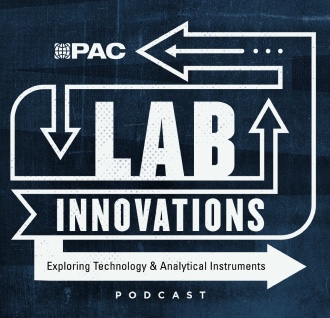Nov-2021
Decarbonisation of steam crackers
A number of technologies are available to reduce the CO2 emissions from steam crackers — from electrification and CCUS to electric furnaces.
Jim Middleton
Technip Energies
Viewed : 16984
Article Summary
The majority of the worldwide production of petrochemicals (PCs, e.g. ethylene, propylene, butadiene and aromatics) originates from the steam cracking process. As steam cracking is a thermal process, a significant amount of energy is used to manufacture the products.
Because of this, steam crackers are a significant emitter of CO2 in the chemical industry, and chemicals represents the third largest direct source of CO2 emissions in the industrial sector (after iron & steel and cement).1
One estimate of worldwide CO2 emissions from steam crackers2 shows 198.7 million tonnes of CO2 in 2015, projected to increase to 264 million tonnes of CO2 in 2030, or a 33% increase (mid-range of estimate figures are quoted). Clearly, with the global drive to reduce, and then minimise, industrial CO2 emissions, action is required.
The objectives of the industry are twofold: to reduce or capture CO2 emissions from the conventional steam cracking process and to seek alternative technologies with lower CO2 footprints.
Modern steam crackers are well optimised and integrated, such that almost all the fuel gas fired in the furnaces is generated from the process. In addition, high pressure steam is generated from the waste heat from the furnaces, which is used to drive the main compressors and for process heating.
The reduction of CO2 emissions from the cracker means replacing the methane fuel from the process with alternative lower carbon fuels, such as hydrogen or electrical heating. While the CO2 emissions from the furnaces can be reduced to zero by using 100% hydrogen or electricity for heating, the CO2 footprint associated with the generation of the hydrogen or electricity has to be carefully evaluated, as these can exceed the CO2 footprint from burning the methane fuel.
When electricity needs to be relied upon for decarbonisation of steam crackers, additional considerations are the availability, reliability and the actual carbon footprint of the power supply, involving many local factors, not all of which may be clear at the time the project final investment decision (FID) is being made.
Reduction of CO2 from cracking furnaces
The furnace fired duty splits approximately as shown in Figure 1 in a liquid cracking furnace.
Of this duty, the amount used to crack the feed has to be provided by firing fuel, but the other duties can be reduced by energy optimisation, resulting in minimised fuel firing.
The fired duty, and consequently the CO2 emissions, can be reduced by 20-40%, the maximum reduction being achieved by Technip Energies’ patented3,4 Low CO2 Furnace design (see Figure 2).
Firing hydrogen
Complementary to the reduction of firing is increasing the hydrogen content of the fuel gas. As the burning of hydrogen does not generate CO2, this is a relatively easy way of reducing the CO2 emitted from the cracker. The impact on the furnace burners and performance is being developed and studied (burning hydrogen is likely to result in shorter, hotter, flames, which, combined with a reduced flue gas flow rate, results in reduced steam production from the furnaces and lower radiant section inlet temperatures). Also, some types of burners are not well suited to burning high hydrogen fuels.
Hydrogen can either be generated from the fuel gas generated in the cracker by reforming or imported from outside the cracker. Hydrogen from outside the cracker would normally be generated by electrolysis. Currently, the most mature electrolysis technology is alkaline electrolysis (AE). Taking the AE technology as an example, Table 1 provides a comparison between hydrogen from electrolysis and hydrogen from SMR reforming the cracker fuel gas. The data is for a 1,500 kTA ethylene liquid cracking plant. The AE estimated figures are based on the data from Reference 8, supplying 100% pure hydrogen to provide the same heat duty as the hydrogen from an SMR reformer converting the fuel gas.
It can be seen from the figures in Table 1 that:
- By all measures (Opex, Capex, CO2 emissions, power consumption) reforming provides a better solution than currently available electrolysis technology
- Electrolysis consumes a large amount of electricity, which can represent a considerable operating cost
- The Capex for electrolysis is currently very high; however, this is predicted to decrease in the period 2021-2050
- For electrolysis, the CO2 footprint of the cracker is only reduced if very low CO2 electricity is available i.e. green hydrogen. As the cracker fuel gas is no longer used in the furnaces, the fuel gas is now surplus
- For 376 tCO2e/GWh electricity, the CO2 footprint of the electricity consumed by the electrolyser plus the cracker is greater than the CO2 emitted by the Source 1 and 2 emissions, when the steam cracker is firing methane fuel (1.72 vs 0.63 tCO2e/t HVC)
- For 376 tCO2e/GWh electricity, the CO2 footprint of the steam cracker with reformer is 62% less than the steam cracker without reforming the fuel gas (0.24 vs 0.63 tCO2e/t HVC)
- For 26 tCO2e/GWh electricity, the CO2 footprint of the steam cracker with reformer is 81% less than the steam cracker without reforming the fuel gas (0.12 vs 0.63 tCO2e/t HVC)
The amount of hydrogen fired should be minimised, by reducing the firing in the furnaces, as described above. This minimises the hydrogen imported to the plant, or makes more hydrogen available from reformed fuel gas.
Importing hydrogen leaves a surplus of fuel gas generated in the cracker, which is primarily methane. This fuel gas can be used for power generation, but this generates CO2 and only improves the overall CO2 footprint of the cracker if imported electricity has a higher CO2 footprint than the electricity generated from the cracker fuel gas.
Technip Energies believes a better solution than importing hydrogen generated from electrolysis is to convert the cracker fuel gas to a high hydrogen stream, by steam methane reforming (SMR) or auto thermal reforming (ATR). Technip Energies’ BlueH2 proprietary technology minimises the energy consumed in the reformer, generates no additional steam, and includes capture of the CO2. Capture of the CO2 from the cracker fuel gas is more economical if it is carried out at the outlet of the reformer, rather than from the reforming furnace flue gas, as the pressure at the reformer outlet is higher, and the equipment can be made much smaller, significantly reducing the capital cost.
Sponsor:
Categories:
Add your rating:
Current Rating: 5

















